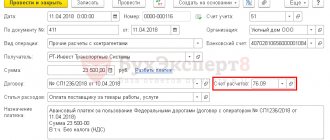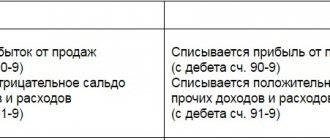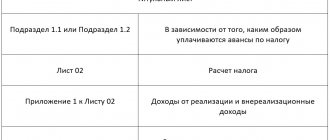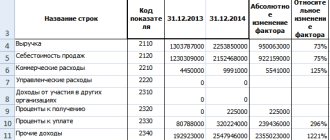In attempts to optimize taxation, companies sometimes resort to dubious schemes that are well known to the Federal Tax Service. As a result, the taxpayer receives not only additional tax assessments, but also penalties. However, there are legal ways to reduce mandatory payments. Let's figure out how to reduce income tax within the law and use these funds to benefit your business.
Legal approach
The legislation offers a whole range of tools for tax optimization - special regimes, benefits, zero rates and targeted preferences. For example, small and medium-sized businesses can switch to a simplified system. This will allow them not to pay VAT and pay tax on their income at reduced rates. However, large organizations and many medium-sized businesses cannot apply preferential treatment. They are faced with the question of how to reduce income tax under OSNO.
Tax is imposed on the difference between income received and expenses incurred in the course of business. The Tax Code strictly stipulates what constitutes income and expenses for the purposes of calculating income tax. Any amateur activity is unacceptable here - this is a direct violation of the law.
It is impossible to talk about ways to reduce income taxes without touching on the topic of gray and black optimization. The most obvious illegal practice is to attribute expenses that did not occur or to inflate the amount of expenses incurred. The Tax Service is actively and very successfully combating such violations. Therefore, in no case should you resort to this “optimization” scheme, as well as other illegal methods. Next, we will consider only legal methods.
Free tax consultation
Reduction of income tax under OSNO
The greatest scope for imagination opens up for taxpayers in the general regime.
Firstly, they can use all methods to reduce the tax of “simplified” people by 15%. And they can add a lot for themselves. Read below about the variety of options, from the simplest to the most sophisticated.
Creating reserves for future expenses
A provision is a write-off in the current period of expenses that will definitely be incurred in a future period.
In accordance with the law, a company can create reserves for the impairment of overdue accounts receivable, for the payment of vacation pay to employees, for annual bonus payments to employees (only specified in the employment contract), and for the depreciation of securities. You need to understand that creating a reserve helps speed up the recognition of expenses, and does not increase expenses as a whole. And if there is no expense in the future, the reserve will need to be restored (read: included in income).
Overestimation of associated costs
Almost every company rents an office or warehouse. In rented areas, it is necessary to maintain life systems, clean, and maintain fixed assets and other labor tools in good condition. All of these expenses are suitable tools for inflating costs.
Personnel training, consulting services
All these items relate to other costs associated with the production of goods. Therefore, train your staff. And you will receive benefits in the form of added value to the business, and the favor of employees, and you will reduce taxes.
The use of any type of consultation from software implementation to marketing research also reduces taxes.
Depreciation of fixed assets
Everyone knows that depreciation of fixed assets is taken into account as an expense when forming the tax base. But not everyone knows that when writing off a fixed asset, you can include in expenses all non-accrued depreciation, as well as the costs of dismantling, recycling and removal of the fixed asset
Offset of overpayments on taxes
Well, let us remind you that advances on income tax may not correspond to the final estimated tax amount for the period. Therefore, the organization accumulates overpayments that need to be read out on time. Otherwise, after three years you will lose these amounts irrevocably.
Creation of a group of companies, some of which are “simplified”
Further - more interesting. You can create a group of companies, some of which will use preferential tax regimes. And show most of the profit in them.
Scheme of actions of the group of companies
The main thing here is either not to advertise the connection between the founders of the group companies, or to make the group model justified. For example, you can segment your business by areas of activity, or by regions of presence. But if the tax inspector discovers the connection and finds it suspicious, you will need to provide a clear argument as to why you did what you did.
Use of offshore companies
The scheme for using offshore companies is similar to the previous one and is absolutely legal, despite the created image of “dark dealings”. Here, as in the previous version, the main thing is to prove to the tax inspector the validity of the existence of a group of companies.
Traditionally, the argument in favor of creating an offshore company is the presence of an intangible asset (copyrights, patents, brand) that needs to be protected. The asset is transferred to an offshore company, and companies in Russia pay for the use of royalties (read: withdraw funds to a low-tax jurisdiction).
Attention! All payment transactions abroad are controlled by the bank's currency control. For carrying out currency transactions using forged documents, Art. 193.1 of the Criminal Code of the Russian Federation provides for criminal liability. Therefore, make sure that payment documents are not deliberately false.
Transfer of assets to a simplified person
Transfer of assets is also an option for creating a group of companies, only now the company’s assets – machines, equipment, offices and other means of labor – become the main protagonist.
Asset action plan
The advantages of this scheme include not only savings on profit tax in a company on OSNO due to inflated expenses, but also the absence of property tax in a company using the simplified tax system. Everyone enjoys the scheme.
Profit tax savings due to leasing
Leasing is truly a treasure trove of tax optimization methods. You can choose one of the proposed options or use both:
- Accelerated depreciation of the leased asset. You can enter into an agreement with the lessor in such a form that, according to all accounting rules, you will have to assign a useful life equal to the term of the agreement. And that's what you need. The useful life is reduced - depreciation increases - income tax is reduced. At the same time, you reduce property tax, since it is proportional to the cost of fixed assets.
- Leaseback as a means of saving on taxes. The essence of leaseback: a company transfers its property to a leasing company, and then receives it on lease, i.e. actually takes out a loan secured by equipment. Thus, the company solves several financial problems, one of which is to reduce income tax by inflating expenses, the second is to reduce property tax due to the lack of property (on paper).
Write-off of losses from previous years
Not every year a company closes with a profit; losses also occur. The legislation allows them to be written off later. When submitting income tax reports, the current period declaration indicates the loss of previous years or part of it. In 2020-2021, the tax base can be reduced in a similar way by up to half. If the loss is greater, it can be carried forward to future years. Previously, there was a restriction that allowed losses to be carried forward in this way for 10 years, but now it has been removed.
It happens that losses from previous years are revealed only in the current year. They can be attributed to non-operating expenses, thereby reducing the tax base, and therefore the tax itself.
Types of expenses
Expenses for income tax are divided into three types:
- Production and sales costs;
- Non-operating expenses;
- Expenses not included in the tax base.
Here, the same as with income: the first two types of expenses directly affect the amount of tax, expenses of the third type do not participate in the calculation of the tax in any way and under no circumstances.
Production and sales costs
These expenses relate to core activities and have their own classification. This type of expense is divided into 4 groups:
- Material costs;
- Labor costs;
- Depreciation;
- Other expenses.
Each group of expenses has its own list and characteristics.
Material costs are the purchase of raw materials, materials, tools and other components that are necessary directly for the production process itself. Their list is in Art. 254 Tax Code of the Russian Federation.
Here are its main points:
- Costs of raw materials/materials necessary for production, as well as for packaging and preparing products for sale;
- Costs of tools, inventory, equipment, workwear, personal protective equipment and other property that is not depreciable;
- Costs for the purchase of components, semi-finished products;
- Costs of fuel, energy, water;
- Costs for the acquisition of services (or work) of a production nature (can be performed either by third-party legal entities or individual entrepreneurs, or by their own structural divisions);
- Shortages and losses from spoilage during storage (as well as transportation) of inventories within the limits of natural loss norms;
- Technological losses that occurred during the production / transportation process (if the concept of “technological losses” is applicable to the product).
Labor costs are far from just employee salaries. This group of expenses includes an extensive list of expenses - you can see it in its entirety in Art. 255 Tax Code of the Russian Federation.
Let's name the main ones:
- Wages calculated in accordance with rates / salaries / piece rates, etc.;
- Payments of an incentive nature - this includes bonuses, allowances, bonuses;
- Payments of a compensatory nature - here we can mention, as an example, allowances for working at night, for going out on holidays, for combining professions, etc.;
- Vacation pay and monetary compensation in case of unused vacation;
- One-time payments for length of service;
- Allowances for work experience in the Far North, as well as payments according to regional coefficients in connection with work in difficult climatic conditions;
- Insurance premiums under compulsory insurance contracts;
- Other expenses in favor of the employee in accordance with the provisions of the employment/collective agreement.
Depreciation deductions – apply to those who have depreciable property. It is calculated using the linear method (for each object) or the non-linear method (for each depreciation group). As a result, the cost of fixed assets is gradually written off as expenses.
Other expenses - this remaining group includes all other costs of production and sales that are not included in the first three groups. For any company to operate normally, it needs an office (which is often rented), it needs telephone communications and the Internet, it needs office supplies - all these are other expenses.
The list of other expenses can be found in Art. 264 of the Tax Code of the Russian Federation, the main ones are:
- Taxes/duties/customs payments;
- Costs for product certification;
- Commission fees for services provided to a legal entity by other organizations;
- Recruitment costs;
- Rent and leasing payments;
- Costs of maintaining official transport;
- Travel expenses;
- Expenses for various consulting/legal/audit/information services;
- Costs for publishing reports and submitting statistical observation forms to the relevant authorities;
- Entertainment expenses;
- Purchase of stationery;
- Payment for postal/telephone and other similar services;
- Purchase of computer programs;
- Other miscellaneous expenses.
Non-operating expenses
This type of expense includes everything that is not related to either production or sales. See the list in Art. 265 Tax Code of the Russian Federation. Among the main representatives of this group are:
- Interest on debt obligations;
- Costs of issuing its securities and servicing purchased securities;
- Negative exchange rate difference resulting from revaluation of advances (issued/received);
- Expenses for creating a reserve for doubtful debts;
- Costs incurred for the liquidation of fixed assets, their conservation and re-preservation;
- Legal costs;
- Banking expenses;
- Losses from previous years that were identified in the current period;
- Bad debt amounts;
- Losses from downtime due to internal production reasons;
- Identified shortage of food supplies;
- Losses from natural disasters - fires, floods, etc.;
- Other expenses, if justified.
Expenses not taken into account for tax purposes
Art. is dedicated to these expenses. 270 Tax Code of the Russian Federation. They do not take part in tax calculations, so you cannot reduce your profits by them. Such expenses, for example, include:
- Dividends accrued from profit after tax;
- Penalties, fines and other sanctions paid to the budget;
- Contributions to the authorized capital, contributions to a simple / investment partnership;
- Advance payment for goods (works/services) - when the organization uses the accrual method;
- Donated property;
- Financial assistance to employees;
- Other expenses from Art. 270 Tax Code of the Russian Federation.
Creation of reserves
An organization may provide in its accounting policies for the creation of the following reserves:
- for doubtful debts;
- for vacation pay;
- for repairs of fixed assets;
- for warranty repairs and maintenance.
This can be very beneficial for optimizing income taxes. Let us explain using the example of the reserve for doubtful debts. The company shipped the goods to customers but did not receive payment. When accounting for income and expenses using the accrual method, she generated income on the date of shipment. And since there is income, it is also subject to income tax. It turns out that there is no money, but 20% of the theoretical amount of income needs to be paid.
To avoid this, a reserve for doubtful debts is created. At the end of the quarter, you need to determine the duration of the delay. If it is more than 45 days, then half of the debt amount is taken into account. If you are overdue for more than 90 days, you can write off the entire amount.
Of course, when counterparties repay their debts, tax will have to be paid. That is, the creation of a reserve can be used to legally obtain a tax deferment. You will need to pay taxes from what you receive, not from your own funds. The advantage of this method is that during the deferment the company’s money remains in operation and generates income.
Choosing a tax system
The first step to optimizing income tax is choosing a tax system. The tax system is a legally established procedure in which taxes are collected from individuals and legal entities.
Today, three taxation systems are legally defined for use by a wide range of individuals and legal entities, one for peasant farms and one for individual entrepreneurs - patent holders. Each of them carries advantages and disadvantages.
Let's figure out which system is right for you. To do this, let’s get acquainted with them in more detail, considering them in order of growth of the business of the proposed taxpayer.
Unified tax on imputed income (UTII)
This is the name of the preferential tax system, which is fundamentally different from the others. The difference is that the tax base is determined not on the basis of actual performance indicators for the period, but on the basis of the basic “imputed” profitability. To find out the amount of imputed profitability, refer to the Tax Code Art. 346.29 paragraph 3.
Income from the provision of household services is estimated by the state at 7,500 rubles per month. A little, right? There is one caveat - household services can only be provided to individuals.
Other types of activities also have quite reasonable “imputed” income. Veterinarians will have a tax base of 7,500 rubles, car mechanics - 10,000 rubles, sellers - 4,500 rubles, drivers - from 1,000 to 6,000 rubles.
The tax is calculated as 15% of the amount of imputed income multiplied by coefficients K1 and K2. The K1 coefficient is determined once a year by order of the Ministry of Economic Development, the K2 coefficient is determined by local authorities.
UTII is a good choice for individuals and organizations that have large incomes while using few resources. With proper calculation, it may turn out that paying 15% UTII will be less in absolute amount than 13% personal income tax.
Talented programmers, lawyers, doctors, advertisers and other freelancers can use UTII to minimize taxes
But there are also pitfalls here.
Firstly, only a small part of individual entrepreneurs and organizations can work with UTII. Among the permitted sectors of activity:
- passenger and freight transportation;
- catering services (with restrictions)
- maintenance, repair and car wash;
- rental of apartments and commercial premises;
- parking space rental services;
- retail trade (with restrictions);
- veterinary services;
- advertising services (with restrictions);
- certain paid services to individuals and others described in Art. 346 Tax Code of the Russian Federation.
Article 346.26 limits the possibilities of switching to the Unified Tax Fund even more. You cannot use UTII if:
- you have more than 100 employees;
- You have a share of more than 25% in another legal entity;
- You use simple partnership and trust agreements;
- local laws limit the use of UTII.
Secondly, you must be sure that you will receive sufficient income every month, because the tax is paid regardless of whether you actually worked and whether you earned a profit.
Finally, from January 1, 2021, UTII will be cancelled. Take this point into account when choosing a tax system.
Simplified taxation system (USNO)
The simplified tax system is also a preferential taxation system, but can be used much more widely than UTII. The simplified tax system is called that way because the methodology for calculating the tax base and tax is extremely simple.
In the first option, the tax is calculated as 6% of income. When using this option, you do not need to confirm expenses for the tax office.
In the second option, you pay 15% of the profit, that is, you take into account and confirm income and expenses.
An entrepreneur or organization using the simplified tax system is a single tax payer, which replaces part of the taxes: income tax, VAT, personal income tax (for the business owner), property tax. But other taxes: transport and land, personal income tax for hired personnel and, in special cases, property tax - will need to be paid.
Which taxation method to choose can also be calculated. To do this we use the inequality:
0.06 × Income - Deductible amounts < 0.15 × (Income - Expenses)
If the inequality is satisfied, then it is more profitable to choose a tax of 6% on income, but if not, then it is better to switch to 15% on profit.
However, there are certain restrictions when switching to the simplified tax system. You will not be able to use the benefits of the simplified tax system if:
- Your organization has branches.
- You are engaged in the production of excisable goods.
- You are engaged in pawnshop activities.
- You provide gambling services.
- More than a hundred people work for you.
- There are more than one hundred million fixed assets in your organization.
- You or your organization has a stake of more than 25% in other firms.
- The turnover of your organization over the past nine months has exceeded 45 million rubles, multiplied by the deflator coefficient.
It is worth noting that 6% and 15% are the maximum rates that can be reduced by the territorial laws of the constituent entities of the Russian Federation. Minimum rates are 0% and 5% respectively.
On the websites of regional tax services you can find all the necessary information on the legislative framework for reducing income tax.
Basic taxation system (OSNO)
OSNO is the most fiscally and administratively loaded regime. Organizations working in this system maintain full accounting and tax records, calculate and pay all taxes existing in Russian tax legislation.
For 2021, the income tax rate under OSNO is 20%.
Once you have decided on your tax regime, it's time to think about methods to optimize your income tax. Let's take a quick look at the special tax regimes.
Acquisition and liquidation of fixed assets
If you plan to purchase transport, equipment or other similar objects, you can consider leasing. The necessary equipment will be provided by the lessor, and the company will make payments to him. Until the end of payments, the equipment will be owned by the lessor, and the organization will be able to use it in its activities.
Optimization of income tax is as follows: leasing payments are included in the cost of production and reduce the base. If you buy equipment at your own expense, then only the depreciation amount can be taken into account as expenses.
Often new equipment is purchased to replace old equipment that is subject to write-off. The costs associated with its liquidation - dismantling, dismantling, removal - can be written off as non-operating expenses in the period when the liquidation occurs. These costs also include underaccrued depreciation of written-off objects.
Reduction of single tax with simplified tax system 6%
You can reduce the income tax of 6% under the simplified tax system in the same way as UTII by subtracting from the resulting tax amount:
- Contributions to the Pension Fund, Compulsory Medical Insurance Fund, Social Insurance Fund.
- Payment of sick leave.
- Payments for voluntary health insurance for employees.
If you are an individual entrepreneur in the singular, then you can apply deductions in the full amount, but if you use hired labor, then you can reduce the single tax by only 50%.
Table 1.
Tax reduction rules
| Rule 1 | You can reduce your tax only in the period in which you paid your contributions. |
| Rule 2 | You can reduce tax only for those periods when you calculated contributions as a “simplified” tax. |
| Rule 3 | You cannot reduce your tax on the amount of overpayments on social contributions. |
| Rule 4 | If you are repaying debts to extra-budgetary funds for previous periods, then you can deduct the amount of payments. |
Trademark registration
Many organizations today spend money on a trademark. This is another good example of how you can reduce profits absolutely legally, not only by reducing taxes, but also getting benefits for business. After all, a trademark contributes to the recognition of the company, the formation of customer loyalty and protection from unfair competition.
After receiving documents from Rospatent, the trademark is registered as an intangible asset. The costs for it, provided that they amounted to less than 100,000 rubles, are immediately included in expenses and reduce the income tax base. If a trademark is more expensive, it is subject to depreciation, and its cost is reduced by tax gradually.
Illegal tax reduction schemes
Not all entrepreneurs and organizations are ready to conduct business honestly. Some are interested not only in legal ways to optimize taxes, but also in options that violate the law. All of them are punishable, threatening the dishonest taxpayer with a fine, arrest and even imprisonment. Their use cannot be considered as one of the ways to reduce taxes, because this is fraud.
The most popular option is to reduce profits in order to reduce taxes. More precisely, not to reduce real profits (no company is interested in this), but to reflect in the documents underestimated revenues or indicate expenses that actually did not exist. To do this, entrepreneurs spend part of their turnover past the cash register, in cash, without issuing a cash receipt.
Larger businesses wishing to bear less of the tax burden can create a network of companies. It splits one enterprise into a network of one-day companies that do not operate for long, artificially go bankrupt or simply close down. In this way, it is possible to cut payments to the budget and avoid the general taxation system.
Uniform
Continuing the conversation about the trademark, it is worth mentioning another attribute of the corporate identity of the organization - the uniform of the employees. This is especially true in the field of retail trade and services to the public.
The costs of manufacturing the form are included in labor costs on the basis of paragraph 5 of Article 255 of the Tax Code of the Russian Federation. And they, in turn, lower the tax base. However, for this, 2 conditions must be met:
- uniforms are provided to employees free of charge or at a reduced price;
- the employee receives it as property, that is, after termination of the employment contract there is no need to return it.
General expenses requirements
Expenses reduce the tax base for income tax; accordingly, the more expenses we can take into account, the less the amount of tax payable will be. From here it follows a logical conclusion that during audits, tax authorities will primarily check expenses: and if some part of them does not meet the requirements, such expenses will be excluded from the calculation, and the tax will be recalculated upward.
What are these requirements?
We have talked about them more than once:
- Economic feasibility;
- Availability of supporting documentation;
- They must be related to generating income.
All three points are pretty clear until it comes to practice. Small companies have few problems with recognizing expenses; most often they involve the lack of supporting documentation or incorrect documentation. But a large business organization has a lot of questions about recognizing expenses. Situations can be very different; here, again, official explanations from relevant government agencies and a good accountant can help.
Important! In the Tax Code of the Russian Federation, justified expenses are understood as the monetary expression of economically justified expenses. There is no other definition, there is no list of what can be considered reasonable expenses and what cannot be considered. The list of justified expenses is largely determined by the characteristics of the business and the internal organization of the company, so it makes sense in the accounting policy for taxation to independently establish the criteria by which you determine the validity of a particular expense transaction.
Important! There is also no list of documents confirming expenses. It all depends on the specific operation. These can be acceptance certificates for completed work, invoices, agreements with counterparties, payment documents, etc.
All these documents must meet the requirements of the legislative acts of the Russian Federation. If, for example, mandatory details are set for a cash receipt, then all of them must be on the cash receipt. If at least one of them is missing, then the tax authorities have the right to consider the document not properly executed and remove this expense.
Expenses for this tax are recognized in the same way as income, using one of the methods: cash or accrual method.
For some expenses, standards have been established, that is, they are not accepted for taxation in full, but only in some part. This is relevant for entertainment, travel, advertising expenses, as well as expenses for creating certain reserves. Amounts of such expenses that exceed the standards are taken into account at the expense of profit after the tax has been calculated on it.
How to optimize income tax
Income tax is a direct payment, which is calculated based on the amount of profit received by the company (the difference between income and expenses). To optimize taxes, entrepreneurs use one of two methods: reduce income or increase expenses.
There are several legal ways to “reduce” income taxes:
Increase costs.
In this case, the object of taxation is the profit received by an individual entrepreneur or LLC. Tax can be reduced if the company's costs increase. For example, indicate in the documents expenses for paying office rent or purchasing items that are necessary for the company’s activities. These expenses, in accordance with Art. 27 of the Tax Code of the Russian Federation will be accepted as a deduction for tax purposes.
Using the list specified in the legislation, companies can increase their costs by purchasing various inventory items and record them as goods for the organization.
Pay dividends instead of salaries.
To do this, it is necessary to include workers in the company (society) and then pay them part of their wages in the form of dividends. Dividends are the part of the profit that remains after paying all taxes. Thus, the company will not have to pay contributions to social funds.
Disadvantages of this scheme:
- Dividends are paid based on the results of the quarter or year.
- Not in all cases it is possible to pay dividends instead of salaries.
- The tax office may conduct an audit if it finds out that an employee is paid a low salary and the company is unjustifiably saving on contributions to the Pension Fund and social insurance funds.
Here's how a company can save money if it pays employees dividends instead of salaries
Provide consultations and train employees.
Costs for seminars and other training of employees at a licensed educational institution are considered production-related expenses in accordance with subparagraph. 23 clause 1 art. 264 Tax Code of the Russian Federation. If the institution does not have a license, the costs can be taken into account as part of consulting expenses under clause 15 of Art. 264 Tax Code of the Russian Federation. Using this method, the company trains its employees and receives a lot of bonuses:
- increases employee loyalty,
- may deduct VAT on training services,
- reduces income tax and insurance premiums for employees.
Using this approach, you reduce not only income taxes, but also insurance premiums paid for employees.
Set off or return overpaid amounts of taxes and contributions.
If a taxpayer has paid more than required, he can return the overpayment of taxes and contributions or offset it in a future period. To do this, you need to contact the Federal Tax Service with an application. If the payer overpaid due to an error in the declaration, he must first submit an updated declaration with the error corrected. Only then can you request a refund or credit for the overpayment.
Many accountants forget about this, and after three years the Federal Tax Service refuses to return or offset this money. To prevent this from happening, you need to regularly check settlements with the Federal Tax Service, return overpayments or offset them against the payment of other taxes or contributions.
Purchase fixed assets for a company that operates under the simplified tax system.
To do this, you can create another company using the simplified tax system and register property in its name: real estate, transport. As a result, a company that operates under the simplified tax system will pay 6% of income, and a company operating under the simplified tax system can legally optimize income tax expenses and save on property tax (with the exception of objects taxed at cadastral value: shopping centers, office premises, retail outlets, etc.).
Marketing research
Often companies resort to the services of marketers to study the market in order to increase their sales. If such studies have not yet been conducted, it probably makes sense to think about it. Moreover, the costs for them reduce the income tax base as consultation costs.
However, this is true under one condition - such costs are justified, documented and made in order to increase income. Market research should be conducted on the products or services that the company is engaged in. If it is directed to some third-party products, then the expenses may not be recognized. The Federal Tax Service will decide that the study was fictitious and was carried out solely to reduce income tax.
Attracting lawyers
With the right approach, even small financial claims against counterparties can be increased several times. The main thing is that the cost of lawyers who will deal with such an issue does not depend on the size of the claims. At the same time, the dispute can be amicably resolved by a settlement agreement without going to court. The settlement agreement, of course, should no longer contain the same amount that was originally declared by the plaintiff.
What is special about this method?
The costs of consultants and lawyers significantly reduce the taxpayer's profits.
In addition, nowhere in the Tax Code of the Russian Federation are requirements for justifying various expenses by comparing them with the income for which they were incurred. So, the amount of remuneration for a lawyer can even be very large - no one can find fault. The best thing about this scheme is that you can perform such tricks quite often.
Employee training
If the organization’s specialists periodically improve their professional level, this will only benefit the business. In addition, training expenses can reduce income taxes - they are written off as other production and sales expenses.
To do this, the following conditions must be met:
- employees sent for training are hired under employment contracts;
- The educational institution with which the agreement is concluded has the right to conduct relevant activities.
Preferential rates
The income tax rate of 20% consists of two parts. In 2021 they are:
- regional - 17%;
- federal - 3%.
For certain categories of taxpayers, federal and regional rates are set at zero. That is, such companies do not actually pay this tax. A 0% rate applies to income received:
- educational and medical organizations;
- organizations providing social services to citizens;
- participants of the Skolkovo project;
- agricultural producers and fisheries organizations.
In addition, the federal portion of income tax is zero for residents:
- free economic zone of Crimea and Sevastopol;
- port of Vladivostok;
- economic zone of the Magadan and Kaliningrad regions;
- tourist and recreational cluster and some other zones.
The regional part of the rate may be lowered by decisions of the authorities of a constituent entity of the Russian Federation for certain categories of payers. Thus, in Moscow for public organizations of disabled people, as well as those who use their labor, the regional rate is set at 12.5%.
When checking an income tax return, the Federal Tax Service may request documents necessary to confirm rights to preferential rates.
Investment deduction
From January 1, 2021, an investment deduction is in effect, which reduces the amount of income tax (not the tax base). The mechanism for its application is prescribed in Article 286.1 of the Tax Code of the Russian Federation. The conditions are:
- In the entity where the taxpayer is located, a law on investment deduction must be adopted.
- The organization must establish in its accounting policies that it has the right to apply this deduction. In order for this right to appear in 2022, it must be fixed in the accounting policy by the end of this year. In the future, this decision cannot be changed for 3 years.
- The deduction applies to facilities that have been put into operation since the beginning of 2021. Or after this date their cost was revised.
- The deduction applies to all objects that belong to depreciation groups III-VII.
- The regional part of the income tax can be reduced by up to 90% of the costs incurred by the taxpayer in connection with the acquisition, modernization or reconstruction of fixed assets. Moreover, this part of the tax must be at least 5% of the tax base.
- The federal portion of the tax can be reduced by no more than 10% of the amount of costs. There is no minimum tax established.
So, we looked at how to reduce income tax under OSNO within the framework of the law. Most legal methods come down to properly accounting for expenses. Companies should periodically review their costs. It is likely that funds will eventually be freed up, which can be used to develop the business.
Are planning
First, let us recall what, in fact, income tax is. It is the direct difference between the revenues and expenses of a business enterprise.
You can change the amount of profit either by reducing income or, accordingly, by increasing expenses.
Thus, thanks to some simple manipulations, it becomes possible to significantly lighten the tax burden.
The easiest way to influence the amount of tax collections legally is through competent tax planning.
This optimization method is the most common and popular among businessmen, since when performing certain actions it allows you to significantly reduce the tax burden and not expose yourself to the blows of regulatory structures. So, tax planning methods include:
- timely selection of the correct taxation regime;
- concluding, let’s say, “competent” contracts, with some subtleties;
- application of preferential conditions provided by law;
- friendship with companies enjoying preferential taxation;
- offshore;
- active use of the right to tax deferrals;
- favorable tax calculation schemes prescribed in the accounting policy of the enterprise.
These are just some of the ways to influence the tax base through planning. Some of them do not require any additional comments from lawyers or complex organizational arrangements, others, for example, offshores, are possible only with large financial investments. Let's look at the most popular and safe tax optimization methods in more detail.









